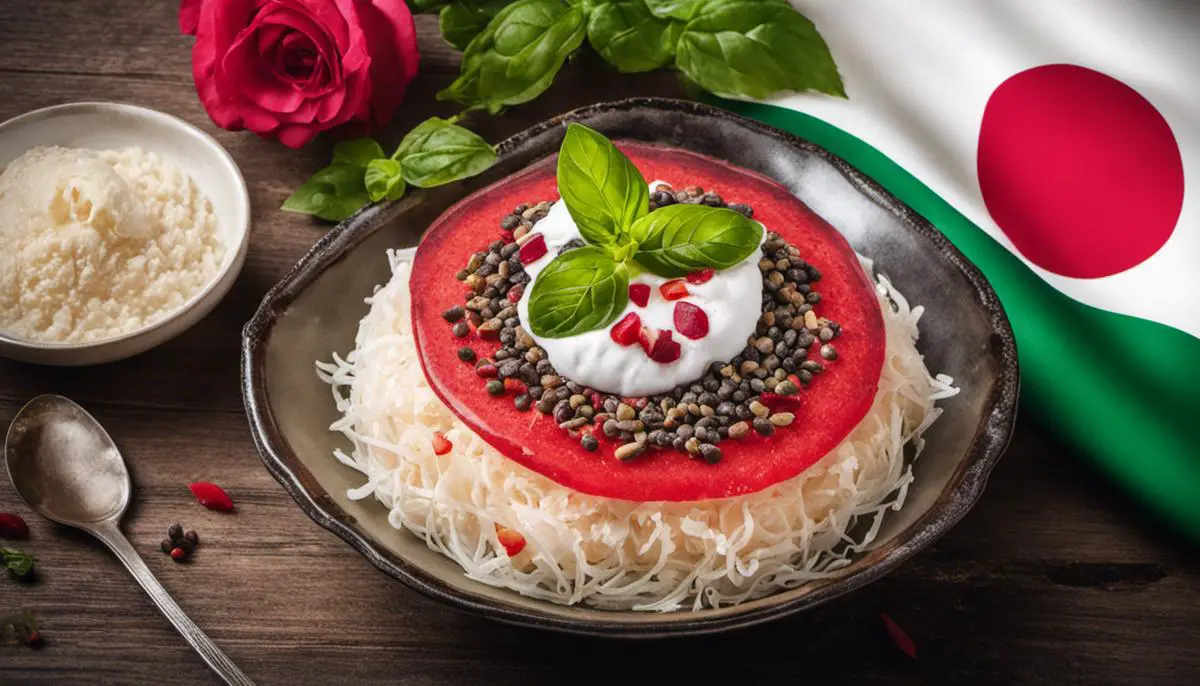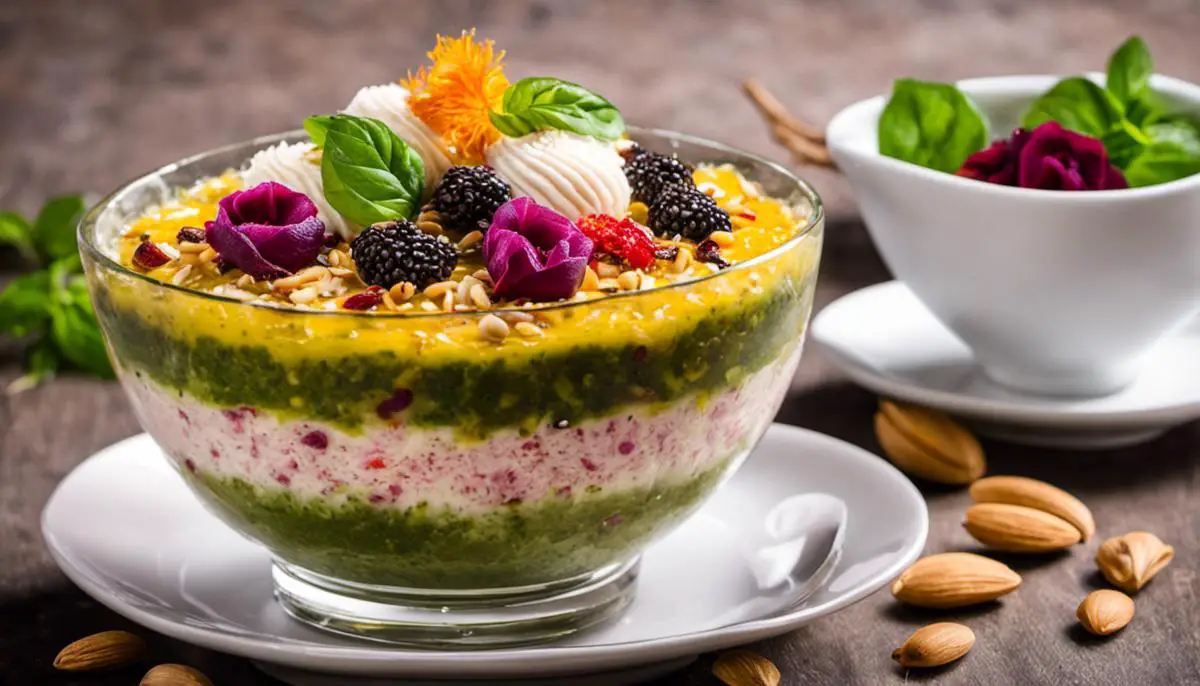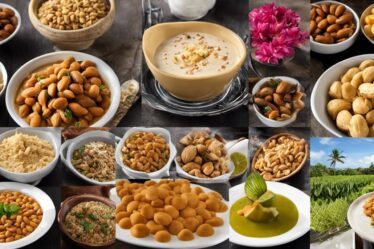
Falooda—an enticing and treasured sweet beverage, originating from the rich tapestry of Persian culture, has enraptured taste buds for centuries. Its remarkable journey, which has permeated through the cultural and religious landscapes of Southeast Asia, is a testament to its enduring allure. From the influence of Mughals on its spread to the Indian subcontinent to its evolution into a beloved dessert in an array of global cuisines, Falooda is undoubtedly a culinary marvel. We invite you to quench your thirst for knowledge as we delve into the rich history, authentic preparation methods, and innovative modern takes on this tantalizing concoction of thin vermicelli, soaked basil seeds, ice cream, and rose syrup.
History and Origin of Falooda
Adventures in the culinary world present an opportunity to connect deeper with cultures from various points on the map. As food enthusiasts on a perennial gastronomic exploration, we often encounter flavors that enchant and enthrall us, leaving us inquisitive about their origins. One such pleasure comes in the form of Falooda – an exotic, silky dessert, passionately loved and devoured across the globe.
But what, really, is falooda? For those uninitiated, falooda is a cool, sweet beverage-cum-dessert, concocted with rose syrup, vermicelli, sweet basil seeds (known as sabja), pieces of jelly with milk — finally topped off with a scoop of luscious ice cream. It has etched a permanent spot on the menus of Indian subcontinent eateries, Middle Eastern cafés, and South Asian dessert parlors globally.
The epoch of Falooda takes us back to ancient Persia, in the era of the globally admired Persian Empire — tracing its roots firmly to a delightful drink known as “faloodeh”. The original faloodeh, enjoyed in the royal Persian courts, was a simple blend of rice noodles in semi-frozen rose water and honey. A wholesome and refreshing delight, it presents a world away from the multilayered falooda we relish today.
Falooda’s enthralling voyage from Persia to India is shrouded in the mysticism of the Silk Road. As a prominent pit-stop on this historic trade route, India became the new home for falooda. The brilliant Mughal Empire took a liking to this delightful Persian tradition and immersed it into their royal kitchen culture.
The Mughals’ fascination for aesthetics and richness found an expression in their food, leading to this simple drink’s evolution into a lavish dessert. The additions of vermicelli, sabja seeds, chunks of fruit, and a generous scoop of creamy ice cream transformed it into the falooda savored today.
From royal kitchens, this decadent dessert gradually trickled down to the bustling streets of the Indian subcontinent. Each region, true to its gastronomical character, flavored the Perso-Mughal falooda with its unique flair. Whether it’s the Kulfi Falooda of Delhi, the Royal Falooda of Mumbai, or the Gulkand adorned versions of Lucknow, each represents a harmonious blend of cultural confluence.
Today, the legacy of falooda remains etched in the culinary DNA of myriad countries spanning from Iran, India, Bangladesh to Pakistan and beyond, reflecting the shared history of the Silk Road countries.
Venturing beyond the Asian borders, this beloved dessert has begun to leave its sumptuous trace in Western countries, popping up on menus of eclectic eateries, immortalizing cross-cultural culinary exchange.
A mouthful of the cool, milky falooda presents a palate of sneaky nostalgia, of shared stories and histories. Devouring each layer presents a snapshot into a historical era, a regal empire, a cultural shift, a trade route that continues to influence our global kitchen.
As we dip our spoons into the yummy multi-layered delight, let’s taste the romance of ancient cultures, the amalgamation of flavors, the whispering tales of the Silk Road, and the saga of its fascinating journey. Just as enchanting and delightful as the dessert itself, the origin of falooda holds a captivating narrative that connects and enthralls food lovers across the world.

Authentic Making of Falooda
There’s nothing quite like diving into the layers of a Falooda, a testament to the vibrant tapestry of cultures that have influenced this tantalizing dessert. But have you ever wondered how to craft it authentically or what key ingredients lend it its unique taste and texture? Let’s embark together on a delicious journey into the core of this wonderful dish.
If you’re going to attempt authentic Falooda, you’re going to need time and the right ingredients. The delicacy, after all, lies in the meticulous preparation of each distinct layer. Hailing from culinary traditions that value the balance of contrasting tastes and textures, Falooda is decidedly more than just a yummy sweet treat – it’s an adventurous mouthful that dances between creamy, crunchy, chewy, and smooth.
To prepare the base, start by brewing strong vermicelli. Don’t be mistaken, though – it’s not your typical pasta variety. It’s a rosy, starchy noodle made of arrowroot or cornstarch, responsible for the delicious chewiness that’s quintessential to Falooda. Now, you might be thinking – where’s the color coming from? That’s courtesy of a touch of beetroot extract. Its purpose isn’t limited to aesthetics, as it subtly complements the rich, sweet flavors of the other ingredients.
Basil seeds, known as Tukmaria or Sabja, set Falooda apart from your average treat. These tiny pearls swell up to a sizeable, crunchy wad upon soaking and add a delightful pop to each bite. Fun fact, they’re also packed with fiber and packed with health benefits!
In contrast with the basil seeds’ crunch, a generous layer of creamy Rabri offers a smooth counterpoint. Simmered slowly over low heat, it’s a luscious concoction of milk, sugar, and a sprinkling of cardamom – a pillowy treat sinking luxuriously into your taste buds.
Following this, the pièce de résistance is a scoop of Kulfi – think of it as ice cream’s denser, creamier cousin from India. Depending on the variant, it provides a smooth, cool, and velvety texture, flavored with an array of seasonings, from fragrant saffron to richly spiced pistachios.
A lavish pour of rose syrup seals the deal, cascading down over the previous layers and lending a romantic, fragrant, and exotic aroma, a sweet link back to the dessert’s Persian roots.
Finally, a grand garnish of chopped nuts and dried fruits, offering a nutty crunch, substantiates Falooda as a royal treat. An ornamental finish that’s the perfect way to top off this ode to the Silk Road.
So, whether you’re a culinary history enthusiast or a dessert lover, an authentic Falooda offers a timeless gustatory passage through diverse cultures and places – each spoonful is a transportive experience. It’s a testament to food’s power to bring people together and to celebrate our shared history, reminding us that our gastronomical delights are a reflection of centuries of culinary exchange and evolution. Now, who’s ready to make some Falooda?

Modern Takes on Falooda
In recent years, restaurants and foodies alike have started adding their own innovative twists to the traditional Falooda. While the core essence of the dessert remains the same, these new variants are a testament to the evolving taste and imagination of our generation and its desire to push culinary boundaries.
One of the most relished renditions is the “Avocado Falooda.” This version replaces Rabri with avocado puree, creating a creamier texture and a unique blend of flavors. The contrast of sugary rose syrup with the distinct, rich taste of avocado makes this variant a delight to the taste buds and a visual feast.
Ice cream stores have also seized the opportunity to get creative with Falooda. Instead of the conventional vanilla or mango Kulfi, intriguing choices such as coffee, blueberry, or matcha have entered the mix, lending a brand new palette of flavors to this ancient dessert. This “Matcha Falooda,” for instance, is a fusion at its best: Persia’s time-honored delight meets Japan’s popular green tea.
Overseas, some food enthusiasts have been transforming Falooda into a complete vegan delight known as “Vegan Falooda.” This rendition avoids any dairy products and uses coconut milk Bijou pearls, chia seeds instead of basil seeds, and vegan-friendly ice-cream. It’s a conscious choice that speaks directly to a growing demographic without compromising the treat’s exuberance.
Then there is the “Bubble Tea Falooda.” This variant marries the popular Taiwanese Bubble tea with Falooda, swapping the traditional vermicelli for tapioca bubbles and served chilled. The amalgamation of chewy tapioca pearls with the rest of the traditional Falooda ingredients is a cross-continental culinary joyride.
Finally, there’s the intriguing Falooda Cheesecake. This delicious crossover incorporates Falooda elements into a classic cheesecake. The end result is a fusion dessert that stands as a testament to just how adaptable and versatile this ancient Iranian delicacy truly is.
These marriage of flavors demonstrate how Falooda is fluidly crossing borders, generations, and dietary preferences all the while establishing itself as an adaptable confectionery delight, ready to be reinvented and relished by the gastronomes worldwide. The possibilities are as endless as the imagination of those fearless enough to experiment and innovate, paying a fitting tribute to a dessert that has itself journeyed through ages and across continents. The future of Falooda lies in these delightful reinterpretations, promising an ever-evolving culinary journey for food lovers everywhere.

The versatility of Falooda is as diverse as the cultures it represents. Whether always prepared true to tradition or reimagined with creative flair by contemporary chefs, its spot in the annals of classical and modern gastronomy remains indisputable. Evocative of the past, representative of the present, and ready to embrace the future, Falooda is more than just a dessert—it is an emblem of shared histories and culinary innovation. Hence, the next time you savour a glass of Falooda, remember—each sip encapsulates not just refreshing flavors but also the countless untold stories of cultural exchange and culinary evolution.



